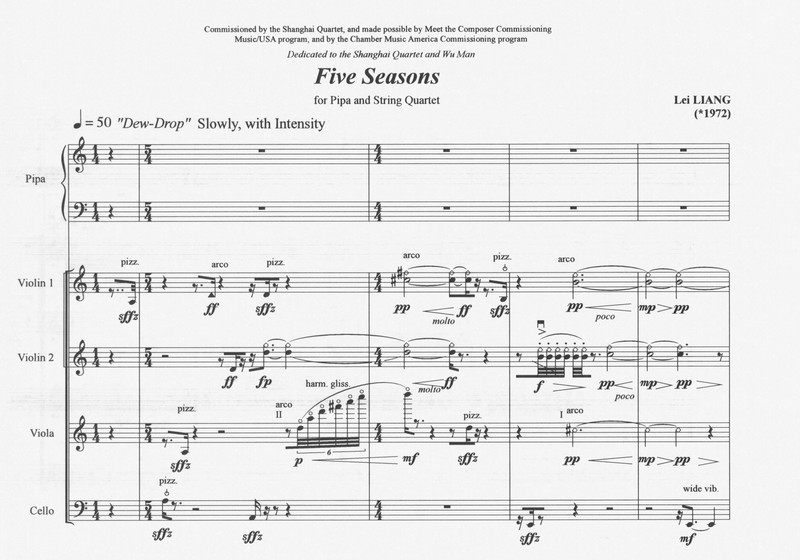Five Seasons: for pipa and string quartet
Item
-
Score title
-
Five Seasons: for pipa and string quartet
-
Composer
-
Lei Liang
-
Program note
-
The ancient Chinese devised a system of five phases (wuxing, also known as five elements) to describe generative and destructive interactions in nature. Each element is correlated to a season: the element wood is correlated to spring, fire to summer, metal to autumn, water to winter. In addition, the fifth element, earth, is correlated to changxia, or long summer, which is the transitional phase between summer and autumn.
In this composition, five chords are chosen from the ancient sheng (mouthorgan) repertoire, now preserved in the gagaku music of Japan. These harmonies are foreshadowed in the second section, then appear in continuous succession – from extremely slow to extremely fast – serving as the harmonic basis of the last three sections.
The piece starts with “dew-drop,” the image of ice melting in early spring, evoked by pizzicatos. The water drops converge into streams and rivers, symbolized by rapid pulsations in the “water-play” section. The middle section of the piece recalls the “cicada chorus” that I heard in the long and hot summer days in Beijing where I grew up. This section is followed by the fall season where downward bending notes of the strings capture the image of “leaves falling” in slow motion. The Chinese pronunciation of winter, dong, is homonymous to drumming sound, therefore the piece concludes with the quintet imitating percussions. The end of the piece may link back to the beginning of the piece, reflecting the cyclical nature of seasons.
Five Seasons was completed during the rainy season in Osaka, Japan.
 Lei Liang
Lei Liang

